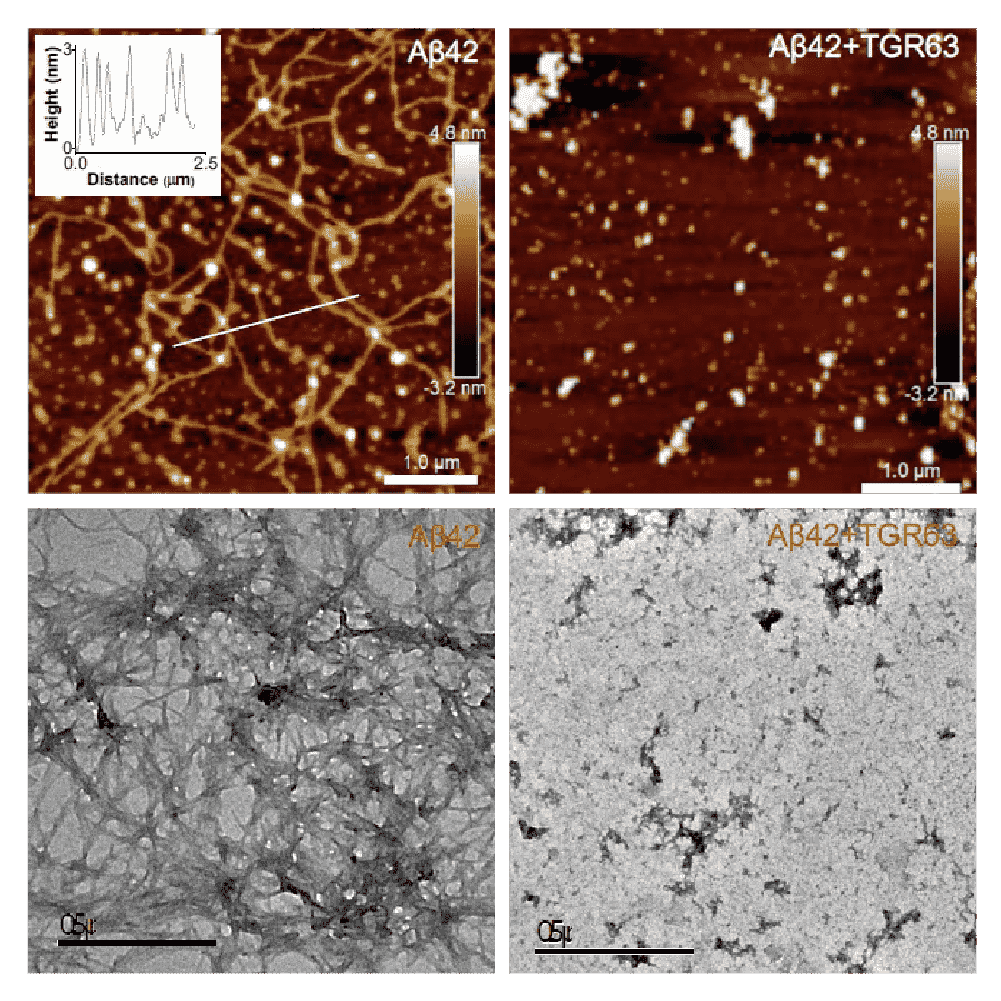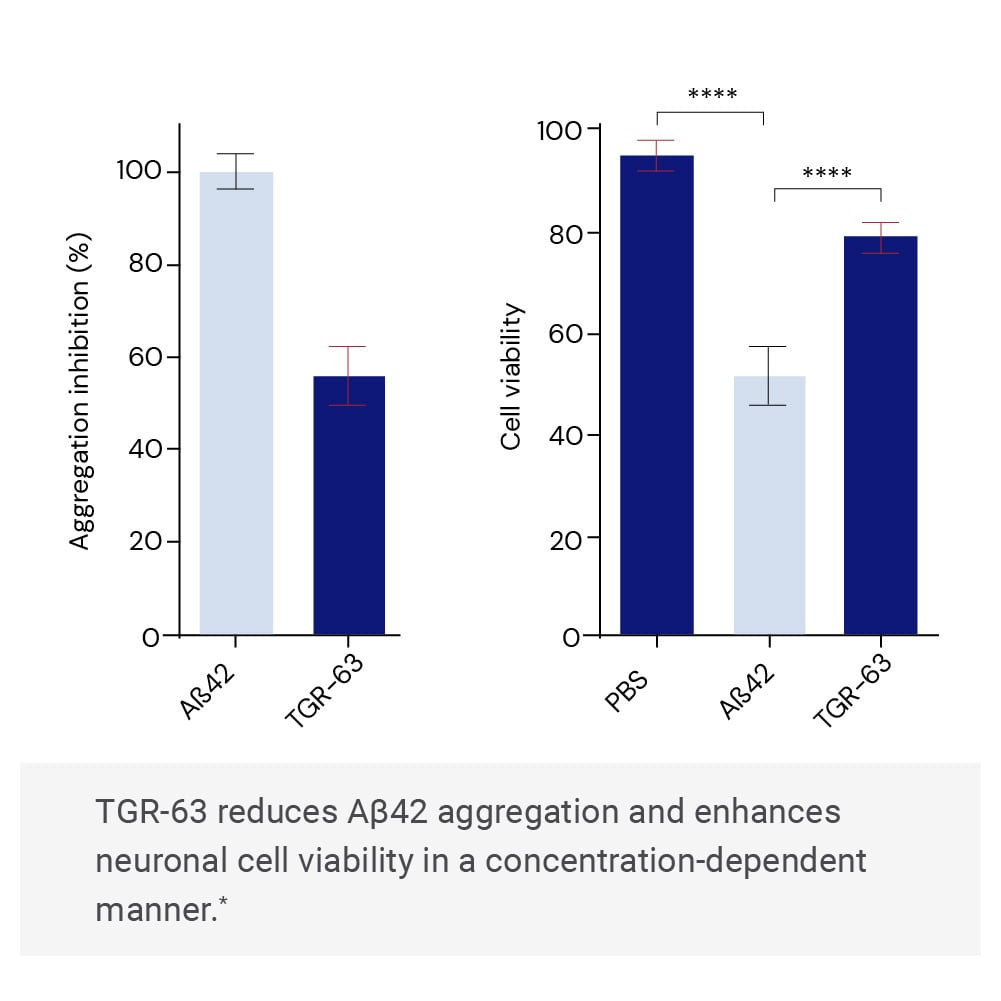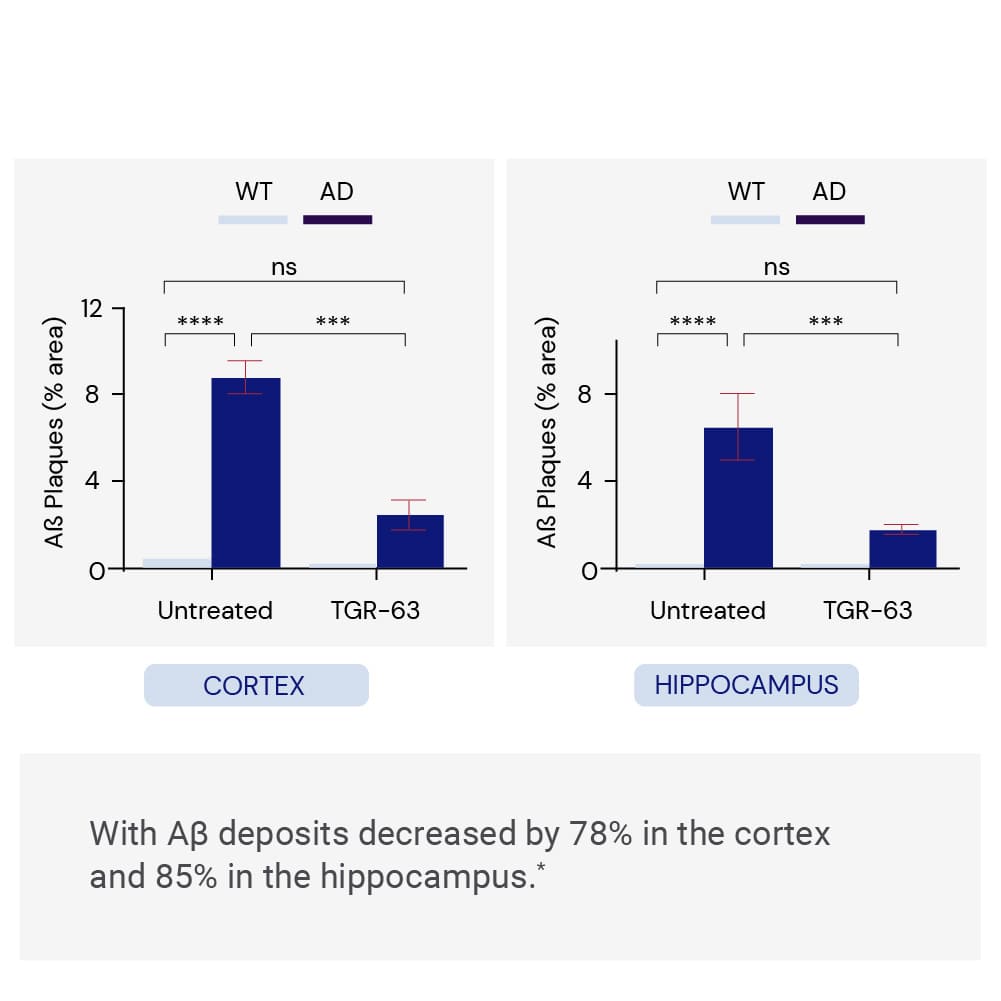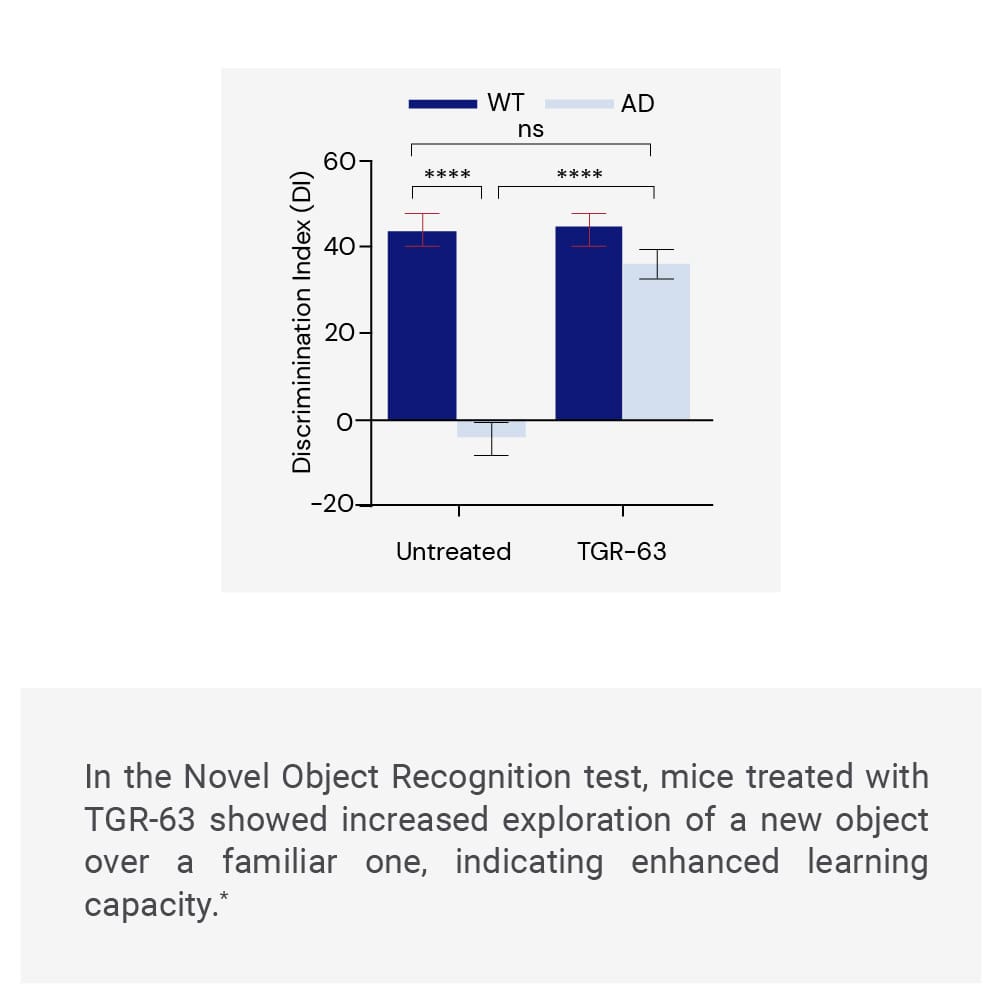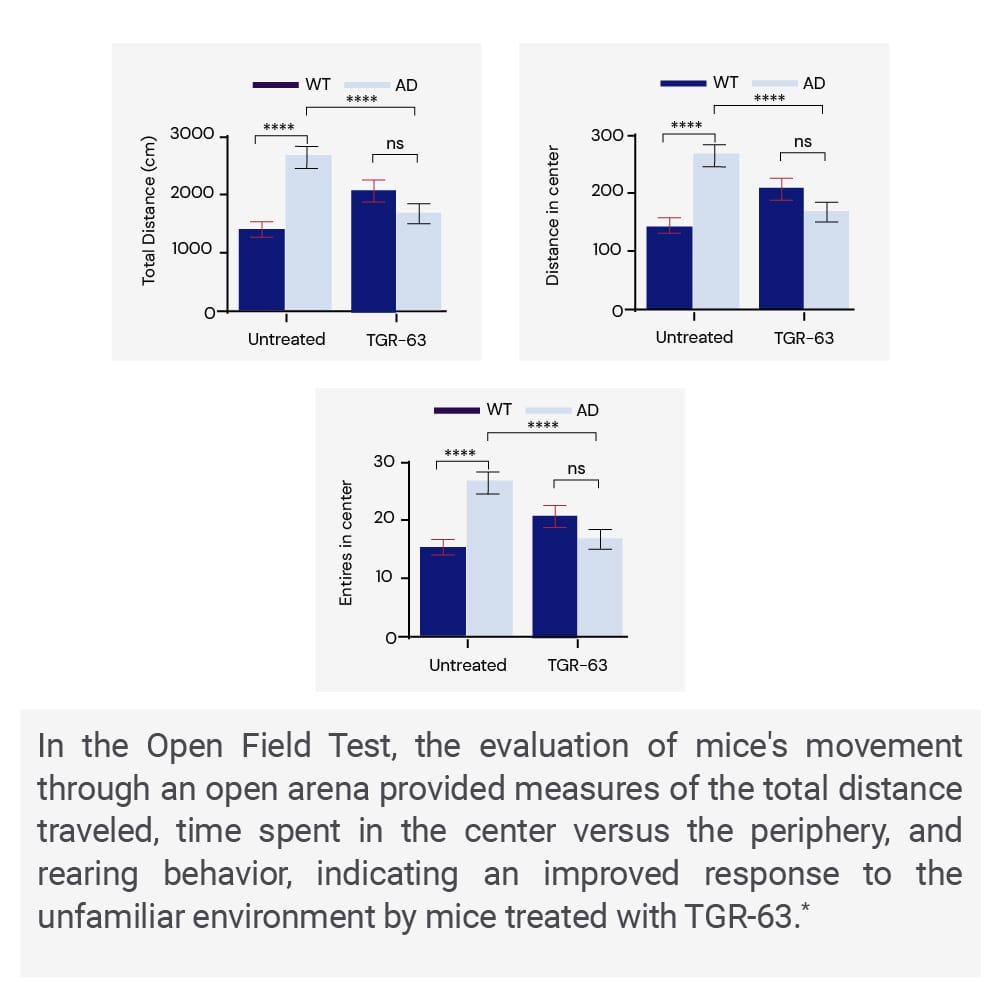TGR-63
A small molecule designed to break down plaque formation in the brain, exhibiting outstanding biocompatibility, the ability to breach the blood–brain barrier, and pre-clinical behavioral efficacy.*
Tracing the Origins: The Development of TGR-63 Compound
It was licensed from the Jawaharlal Nehru Centre for Advanced Scientific Research in India and developed by Prof. T Govindaraju, who designed several naphthalene monoimide compounds and compared their capacity to inhibit Aβ aggregation, their cytotoxicity, and their neuronal rescue capacity, in which TGR-63 excelled.
Introducing
TGR-63 A naphthalene monoimide compound
designed with a flat, naphthalene core, one hydrophobic and aromatic motif and one hydrophilic motif, which play a critical role in the molecule’s capacity to interact with the Aβ-42 peptide.
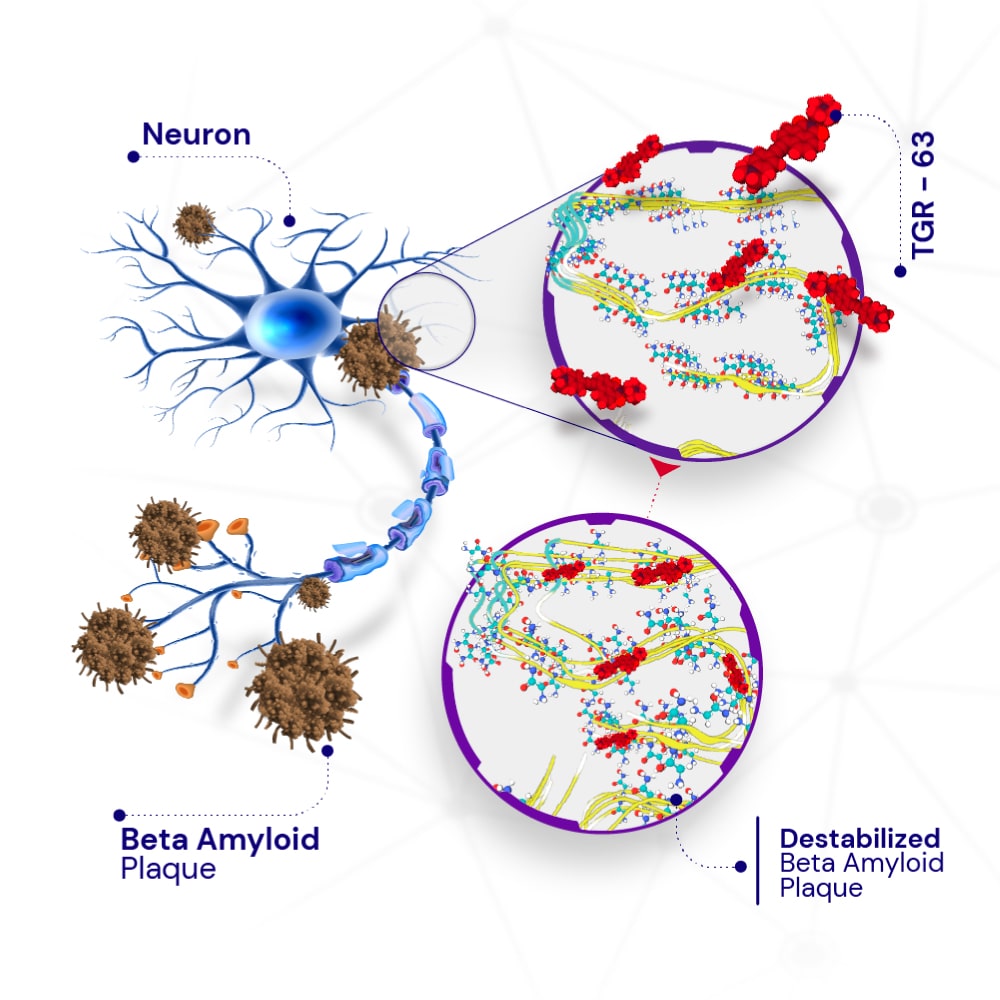
In silico analysis demonstrated that TGR-63’s molecular design enables it to interact with amyloid aggregates, disrupting various types of bonds. This destabilizes plaques, facilitating their breakdown and addressing AD pathology.*
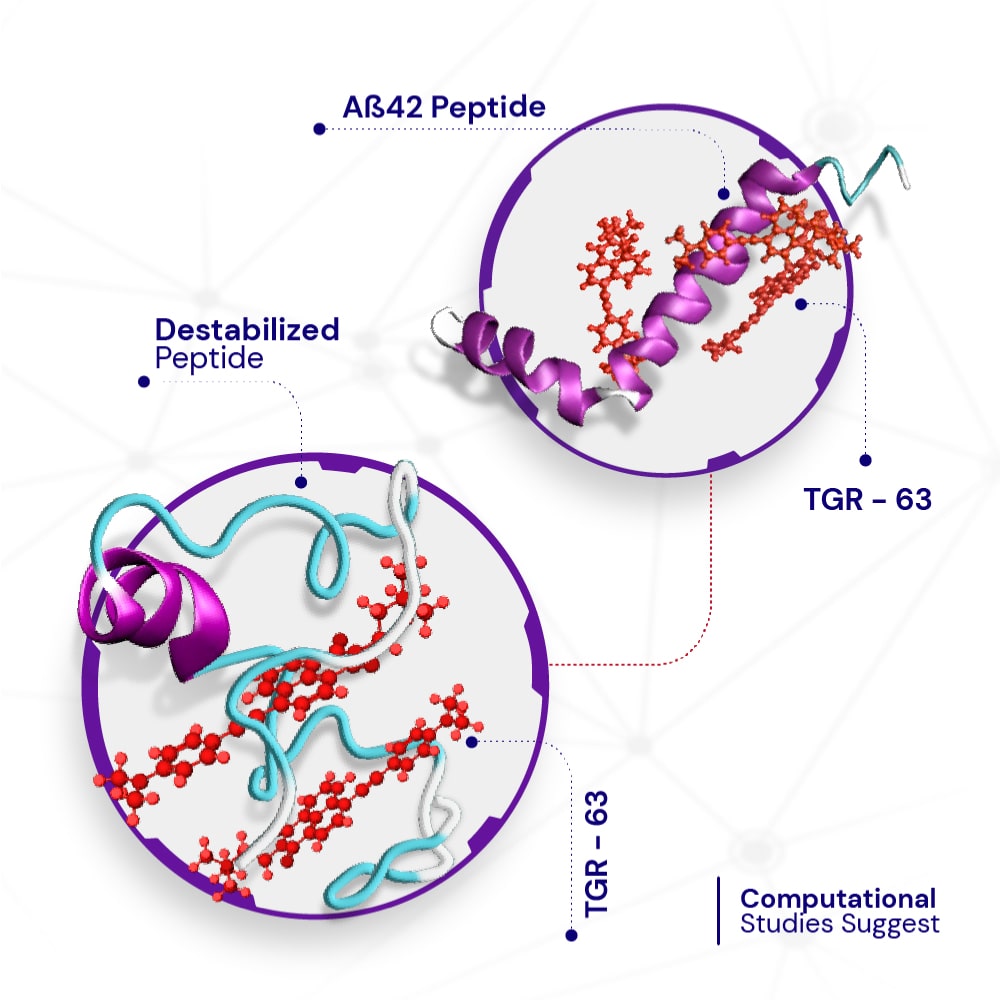
TGR-63 also shows high affinity for the Aß42 peptide, compromising its tertiary structure and promoting the formation of globular non-toxic structures that can be metabolized.*

Pre-clinical Studies: Detailed Scientific Results
*Adv. Therap. 2021, 4 2000225

